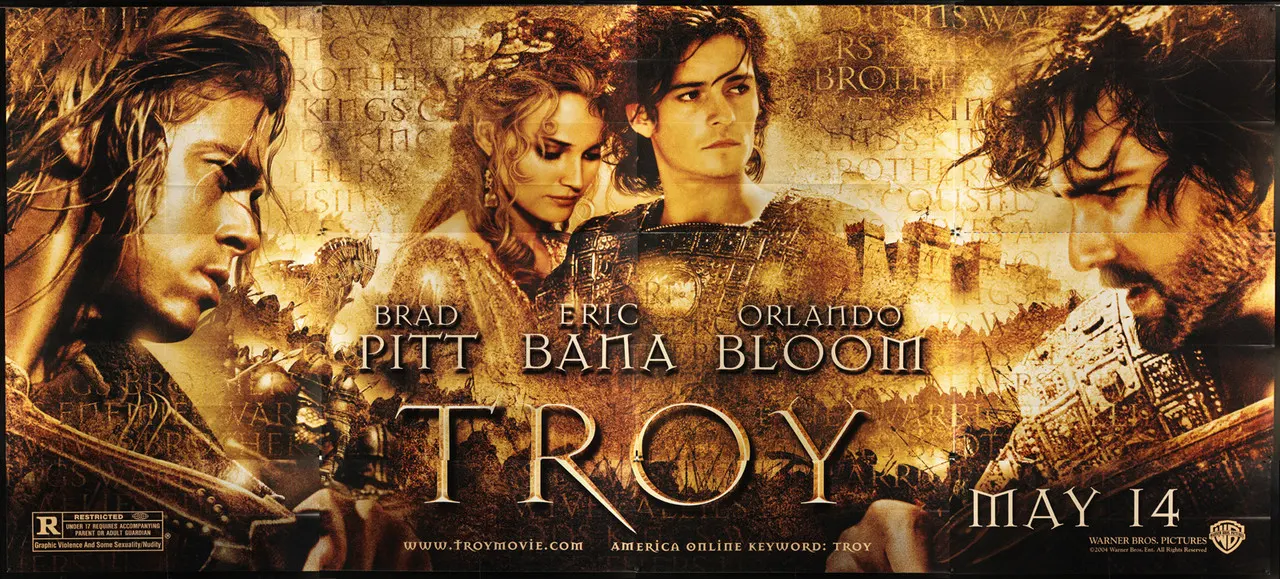Wolfgang Petersen's film "Troy" encapsulates the grandeur and tragedy inherent in the ancient Greek epic, vividly bringing to life the legendary narrative of Achilles and the Trojan War for cinematic audiences. Through a combination of striking visuals, compelling performances, and an intricate historical context, the film constitutes a significant contribution to the body of cinematic adaptations of classical literature.
A notable aspect of the film is the exceptional versatility demonstrated by its ensemble cast. Brad Pitt delivers a remarkable performance as Achilles, skillfully conveying the character’s fierce warrior essence alongside his tragic vulnerabilities with both intensity and nuance. His physicality during battle sequences and emotional depth in more subdued moments engender a memorable portrayal that serves as the film’s foundation. Conversely, Eric Bana’s portrayal of Hector provides a poignant counterpoint to Pitt’s Achilles, effectively expressing a spectrum of emotions, from pride to desperation, that resonate profoundly. The dynamic between these two characters emerges as one of the film’s most compelling elements, elevating the narrative beyond mere visual spectacle.
Visually, "Troy" is undeniably impressive. The cinematography, led by Roger Pratt, captures both the expansive landscapes of ancient Greece and the devastating beauty of warfare with remarkable clarity. The battle sequences are characterized by their grandiosity and chaotic energy, immersing viewers in the intensity of the conflict. However, despite the stunning visuals, there are instances in which they overshadow character development, resulting in emotional stakes that may feel underexplored.
The film’s costume design merits particular attention, especially for its authenticity and meticulous detail. The attire of the characters enhances the immersive quality of the film, evoking the grandeur associated with the era. Nonetheless, some costumes occasionally exhibit anachronistic elements, which subtly detracts from the historical accuracy the filmmakers strive to achieve.
Petersen’s directorial prowess is evident in his ability to convey the epic scope of the narrative; however, his approach also invites scrutiny. While the film ambitiously seeks to retain the essence of Homer’s Iliad, it is also marked by significant deviations that may alienate purists of classical literature. The truncation of characters and subplots leads to a streamlined narrative that, although more palatable for contemporary audiences, sacrifices the complexity and richness of the source material. Notably, characters such as Agamemnon and Paris, while depicted with sufficient depth, may lack the intricate motivations and moral ambiguities found in their literary counterparts.
The film also grapples with the themes of honor, love, and the futility of war. These themes, central to the Iliad, are explored through the interpersonal dynamics among the characters. The relationship between Achilles and Patroclus, for instance, is depicted with poignancy, highlighting the motivations that drive Achilles into a vengeful fury. Yet, the motivations of other characters, such as Helen, may be less satisfactorily examined, raising questions about agency and representation of women in both classical and contemporary narratives.
Another critical aspect lies in the film’s conclusion. While the Iliad offers a narrative steeped in tragedy and moral reflection, "Troy" opts for a climactic spectacle that, albeit visually impressive, may dilute the philosophical questions posed by the original text. The desire for a heroic resolution may overshadow the inherent tragedy of the story, undermining its emotional weight.
In summary, "Troy" stands as an ambitious cinematic venture that succeeds in many respects while simultaneously inviting critical dialogue about fidelity to classical themes and character development. As a modern retelling of a timeless epic, it engages viewers with its stunning visuals and compelling performances, yet the film ultimately grapples with the challenge of bridging the gap between historical fidelity and cinematic storytelling. The dichotomy between spectacle and depth underscores the intriguing complexities of adapting ancient narratives for contemporary audiences, thus ensuring its continued relevance in discussions of literature and film.
Watch Movie: TROY




0 comments:
Post a Comment